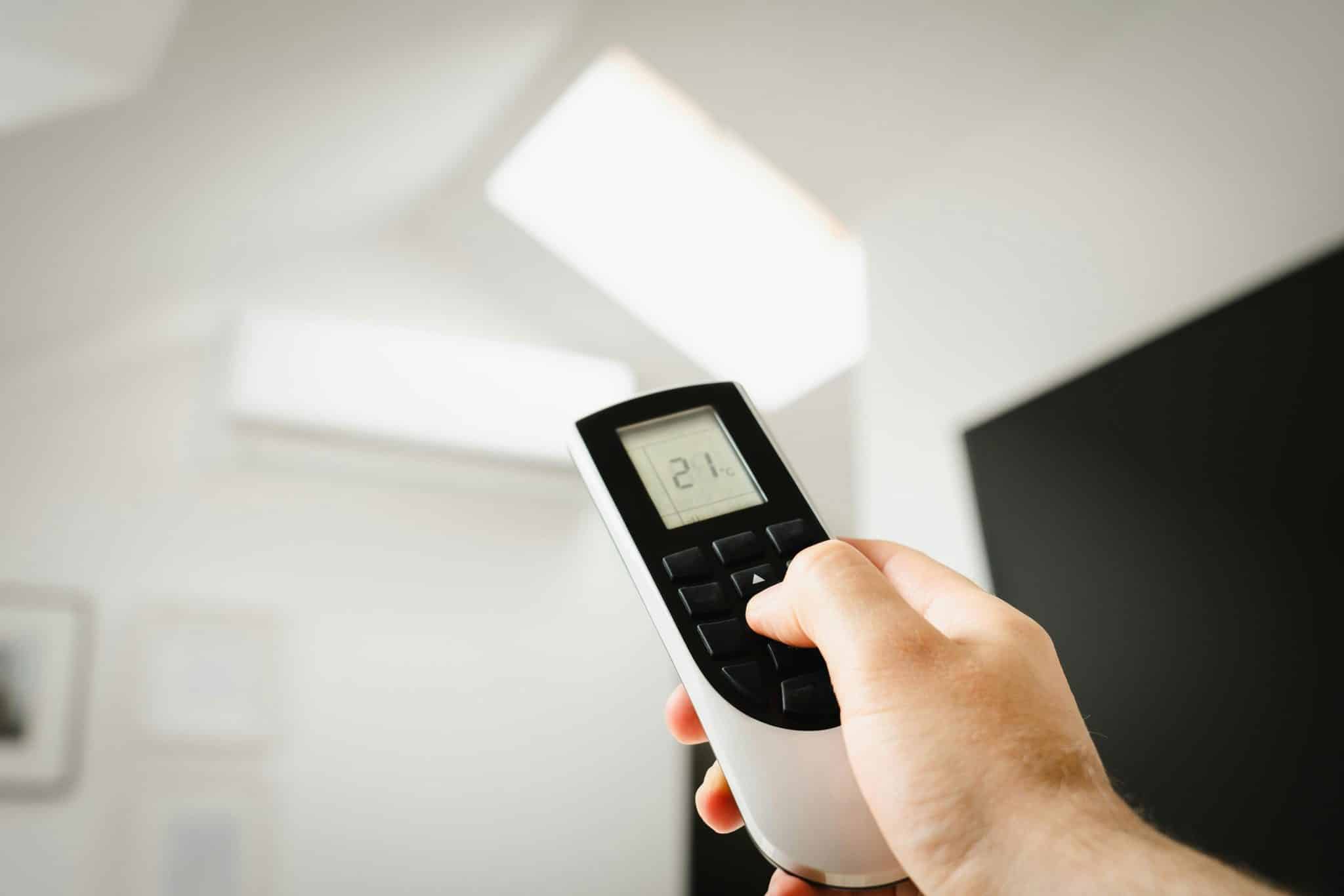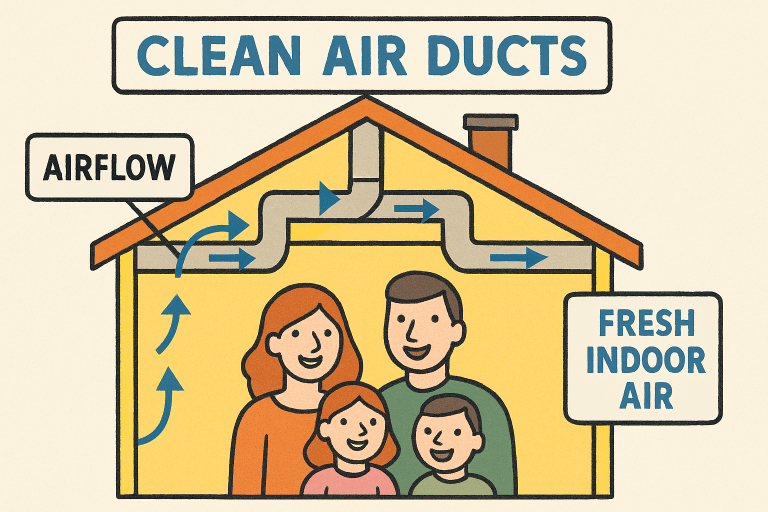Key Takeaways
- Regular air duct cleaning enhances indoor air quality by removing accumulated dust and allergens.
- Clean ducts enhance HVAC system efficiency, resulting in energy savings and extended equipment lifespan.
- Routine maintenance helps prevent health issues related to poor air quality, such as allergies and respiratory problems.
The quality of the air inside your home has a direct impact on the comfort and health of your household. Your HVAC system circulates air through an intricate network of ducts, which can accumulate contaminants over time. This buildup of dust, allergens, pollen, and other debris gradually reduces air quality, increases energy consumption, and can even cause or worsen certain health conditions. Many homeowners recognize the importance of indoor air duct cleaning as a foundational step to achieving a safer and more comfortable living environment.
As more families spend time indoors and become aware of environmental health, the emphasis on ventilation, air filtration, and duct maintenance continues to grow. When ductwork is neglected, it serves as a path for airborne pollutants to continuously recirculate, triggering allergies, respiratory irritation, and unpleasant odors. Routine attention, along with professional cleaning, ensures better air quality and provides peace of mind for everyone in the household.
With regular cleaning and simple preventive measures, homeowners can drastically limit the accumulation and spread of airborne contaminants. This is especially crucial in homes with pets, smokers, or family members suffering from allergies or asthma. Understanding the risks and benefits associated with air duct cleaning enables more informed home maintenance decisions that support the long-term well-being of your family.
Over time, even regular vacuuming and dusting can’t prevent some particles from bypassing filters and entering the HVAC system. Instead, these particles settle within the ductwork and accumulate over time, making periodic professional attention a wise investment.
Understanding Air Duct Contamination
Modern homes are tightly sealed for energy efficiency, which, while reducing drafts, also reduces the natural exchange of air between the outdoors and indoors. As a result, pollutants, including dust mites, mold spores, dander, and pollen, become trapped inside and recirculate through the ductwork every time the heating or cooling system operates. According to the National Air Duct Cleaners Association (NADCA), contaminants inside your air ducts can affect both health and comfort if not addressed through regular cleaning.
Homes with furry pets, tobacco smoke, or recent renovations are at greater risk of accumulating indoor air pollutants. For some households, especially those with young children, the elderly, or individuals with underlying respiratory conditions, the impact of duct contamination can be significant. Trapped moisture within ducts can further promote the growth of mold and bacteria, thereby degrading air quality. Adding point‑of‑use filtration such as Alen home air purifiers sized for your room can help reduce recirculating pollutants in sealed homes.
Health Benefits of Clean Air Ducts
By removing contaminants from the air duct system, households experience a noticeable drop in airborne allergens and potential irritants. This provides relief for those suffering from allergies, asthma, and other respiratory sensitivities. Clean ducts reduce the probability of allergen-related flare-ups and contribute to a fresher, less stuffy indoor atmosphere.
Families with young children or elderly members in particular benefit from improved indoor air, as these groups may be more susceptible to airborne illnesses or microbial growth promoted by dust and moisture in the ductwork. Ensuring ducts remain clean supports better sleep, reduces sneezing and coughing, and eliminates stale or musty indoor odors.
Enhancing HVAC Efficiency

A clean air duct system allows for unobstructed airflow, reducing strain on the HVAC unit and enabling it to operate efficiently. Dirty or clogged ducts, on the other hand, force the system to operate harder and for longer cycles to maintain desired temperatures. This leads not only to increased energy bills but can also hasten the breakdown of expensive system components.
According to the U.S. Department of Energy, consistent maintenance—including regular air duct cleaning—can reduce HVAC energy consumption by up to 15%. This translates to direct savings on monthly utility bills and extends the life of your heating and cooling equipment.
Preventing Mold Growth
Damp or humid conditions within ductwork create an ideal environment for mold to flourish. Mold spores are then distributed throughout the home via the ducts, not only producing unpleasant odors but potentially triggering health issues for sensitive individuals. Regular inspections, timely repairs of leaks, and professional cleaning help prevent mold proliferation, maintaining a cleaner and safer indoor climate.
The presence of visible dust or musty odors when the HVAC system is running can be an indicator that mold or mildew is present. Promptly addressing these signs can avert more serious health and property damage risks associated with unchecked mold growth.
Recognizing When to Clean Your Air Ducts
Dust buildup around vents, frequent respiratory discomfort among occupants, and uneven or weak airflow from registers can all be signs that the air ducts are in need of a professional cleaning. The Wisconsin Better Business Bureau recommends having air ducts serviced every three to five years, or more often in homes with unique indoor air quality risks or after significant home renovations. Monitoring your system’s performance and your family’s health can help determine the ideal cleaning frequency.
Other warning signs include visible mold inside ducts or HVAC units, vermin infestation, or excessive dust exiting supply vents. Early intervention prevents small issues from evolving into more significant and costly repairs.
Choosing a Professional Service
Selecting a reputable, NADCA-certified air duct cleaning provider ensures adherence to industry standards and thorough removal of contaminants. Professional technicians will clean all HVAC system components, including coils, registers, grilles, and drain pans, for a complete solution—not just a superficial improvement.
Always check for certification, read customer reviews, and verify insurance before scheduling service. An experienced provider will also offer post-cleaning advice to help homeowners maintain improved air quality in the long term.
Maintaining Clean Air Ducts

In addition to periodic professional cleaning, homeowners should change HVAC filters every one to three months, keep supply and return vents clear of obstructions, and ensure adequate home ventilation. Reducing clutter and vacuuming regularly also minimizes the dust entering the system.
Notice a persistent drop in air quality or system efficiency between professional cleanings. It may be time to check for clogged filters or blocked vents as immediate maintenance steps.
Conclusion
Clean air ducts are a critical part of a healthy, efficient home. Removing accumulated debris promotes better respiratory health, enhances system efficiency, and prevents the growth of mold and unpleasant odors. With routine cleaning and care, families enjoy not only cleaner air, but also lower energy bills and fewer repair costs—benefits that last far into the future.













